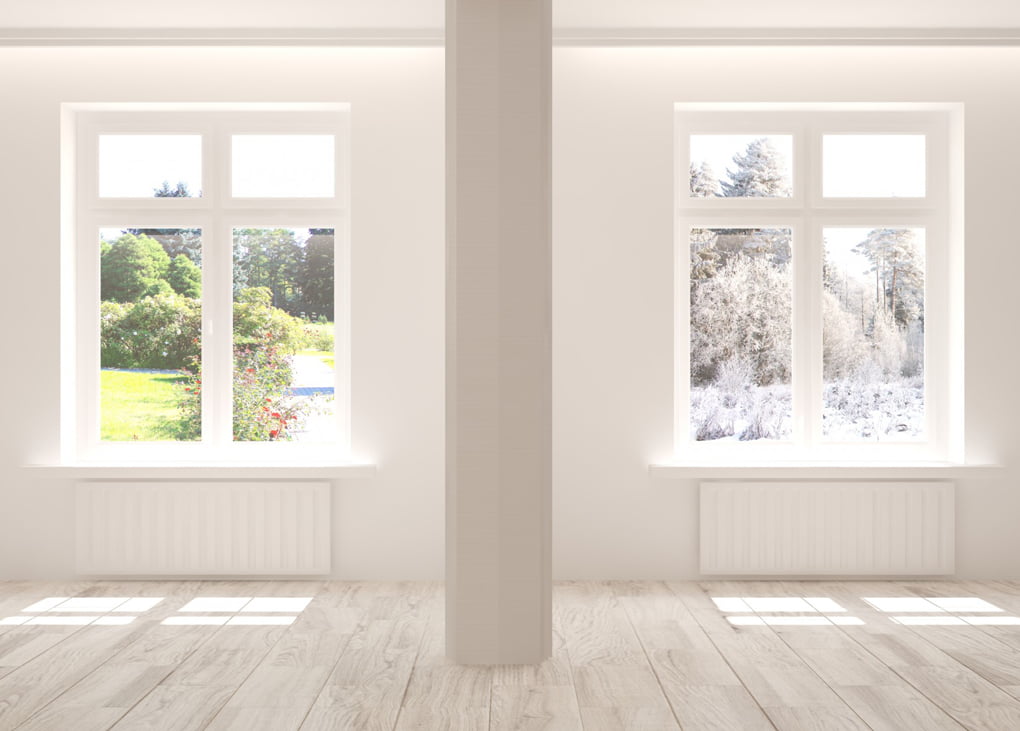New research from the University of Pittsburgh and the University of Oxford proposes a new “smart window” design. The design for the versatile window proposes harvesting the sun’s energy in the winter for warming and reflecting it in the summer to help keep it cool.
“The major innovation is that these windows can change according to seasonal needs,” says first author Nathan Youngblood, Assistant Professor of Electrical and Computer Engineering at Pitt. “They absorb near-infrared light from the sun in the winter and turn it into heat for the inside of a building. In the summer months, the sun can be reflected instead of absorbed.”
The window design calls for an innovative film, which is made up of an optical stack of materials less than 300 nanometers thick. The stack includes a very thin active layer made of phase-change materials that can absorb the invisible wavelengths of the sun’s light and emit it as heat. That material can also be switched so that it turns those wavelengths of light away.
“Importantly, visible light is transmitted almost identically in both states, so you wouldn’t notice the change in the window,” Youngblood says. “That aesthetic consideration is critical for the adoption of green technologies.”
The researchers estimate that using these windows would save 20 to 34 per cent in energy usage annually compared to the double-glazed windows typically found in UK homes.
“This work demonstrates yet another interesting optoelectronic application of phase-change materials, with the potential to significantly improve our everyday life,” says Peiman Hosseini, CEO of Bodle Technologies, which specialises in ultra-thin reflective films.
“The commercialisation of PCM-based tuneable low-e glass panels still has a number of significant challenges left to overcome; however, these preliminary results prove that the long developmental road ahead is certainly warranted. I believe this technology should be part of any future holistic policy approach tackling climate change.”
 Matt Dillon
Matt Dillon


Leave a Reply